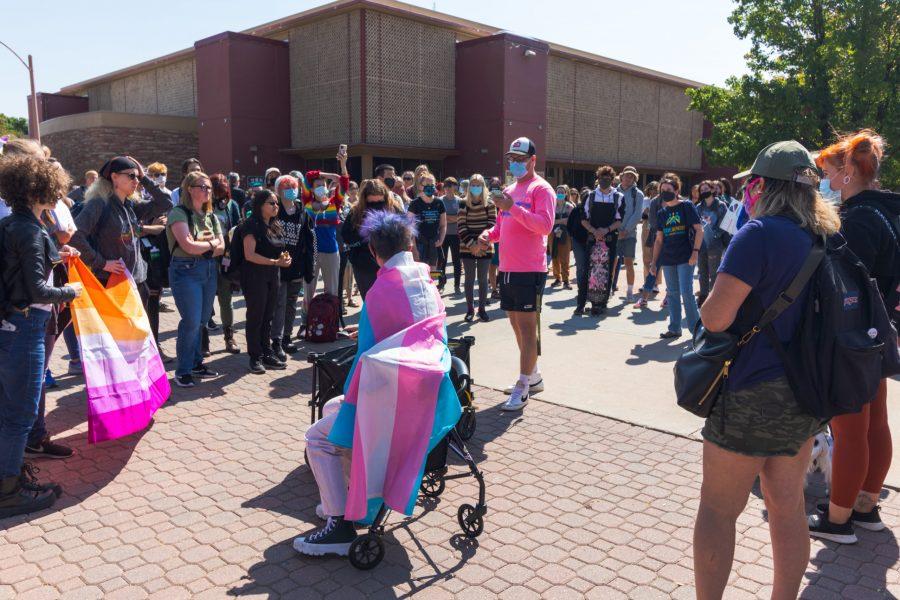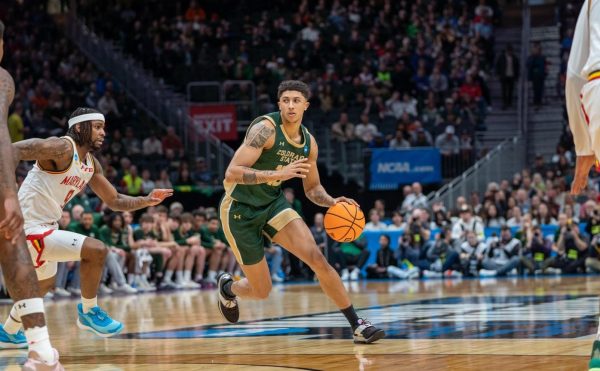‘We’re loud’: A history of student protests
Collegian | Michael Marquardt
Protesters on The Lory Student Center Plaza at Colorado State University during the Call Out CSU protest Sept. 17, 2021. The protest was in response to incidents of hate speech on campus during the fall 2021 semester.
February 8, 2022
College campuses have been a hotspot for political protests and demonstrations of free speech since their beginnings. In America, many impactful campus protests happened in the late 1960s and early ’70s in protest of the Vietnam War.
“Whenever I think of a college protest, I think of Kent State (University),” said Leora Greene, a fourth-year psychology student at Colorado State University.
The Kent State protests, which occurred May 1-4 of 1970, were in direct response to President Richard Nixon’s invasion of Cambodia during the Vietnam War. The Ohio Army National Guard was called to intervene in the conflicts and on May 4, some of them fired into the crowd, killing four students and wounding nine.
Greene said the Kent State protests were a strong example of students taking action on a national issue.
“That whole generation went from this silent generation of, ‘You do what you’re told’ to, ‘I don’t understand why we are perpetuating injustice,’” Greene said.
Similar violent protests occurred on campuses around the country, including at Colorado State University. Strikes occurred on the CSU campus in the days following the Kent State Shooting and, on May 8, 1970, smoke was reported coming from Old Main, one of CSU’s oldest buildings, which subsequently burnt to the ground. Investigations concluded the origin was arson, but it is still unknown who set the fire.
“We’re loud, and we care with our hearts, and we care with our heads.” -Leora Greene, fourth-year CSU psychology student
Another important set of historical campus protests are the Columbia University protests of 1968, which involved the construction of what appeared to be a segregated gymnasium between the university and Harlem in New York City. Black students occupied an administration building for about a week before police showed up in force and the students left, but the occupation caused the university to scrap its plans for the gym altogether in March 1969.
“Protests in general are an opportunity to let administration or the powers that be know how students feel about any range of issues that impact us regularly,” Greene said. “At the very least, it forces other students who may not otherwise be paying attention … to pay attention to what’s happening in their direct sphere.”
Exhibitions of free speech regarding racial injustices have occurred on our own campus, including in 2019, when students spoke out against a racial injustice perceived to be perpetuated by the University in the way they handled a blackface photo posted by a student on social media.
Greene said the blackface photo protests, from which the @NotProudToBe Instagram account was formed, was an example of how students can come together in solidarity and pave the way for future reform.
“We’re loud, and we care with our hearts, and we care with our heads,” Greene said.
Reach Noelle Mason at news@collegian.com or on Twitter @noellemaso.





